Interference Phase Unwrapping Method Using JVC Algorithm to Generate Branch Cuts
-
摘要: 海面高程3维成像是随着天宫二号发射而实现的技术,相位解缠是3维成像高度计高程反演的关键步骤。为改进Goldstein枝切法,缩短干涉相位图中枝切线的总长度,提升相位解缠的精确性,该文提出一种基于JVC全局最优线性分配算法生成枝切线的相位解缠方法。首先找出干涉相位图中的所有残差点并计算每一对异号残差点之间的距离;通过对比每对残差点之间的距离和各自与最近边界的距离和,确定采用JVC算法放置枝切线还是在残差点与边界之间直接放置枝切线,使得平衡枝切线的总长度最短。通过对3维成像高度计海面高程仿真干涉相位图和Etna火山地区干涉图像进行解缠实验并与其他3种算法进行对比,表明该算法的解缠结果与真实相位值误差相对较小,而且能够有效避免“孤岛现象”的产生。
-
关键词:
- 相位解缠 /
- 3维成像高度计 /
- Jonker-Volgenant-Castanon算法 /
- 枝切线
Abstract: Three-dimensional imaging of sea surface altitude is a technology realized with the launch of Tiangong-2. Phase unwrapping is a key step in elevation inversion of three-dimensional radar imaging altimeter. In order to improve the branch cut algorithm proposed by Goldstein, shorten the total length of branch cuts in interferogram and advance the accuracy of phase unwrapping, a method that based on Jonker-Volgenant-Castanon (JVC) global optimal linear assignment algorithm to generate branch cuts is proposed in this paper. At first, all residual points in the interferogram are found out, and the distance between all opposite polarity pairs is calculated. Then, by comparing the distance between each pair of residual points and the distance sum between both of them and the nearest boundary, it is determined whether to place the branch cuts directly between the residual points and the boundaries or to use JVC algorithm. So, the shortest total length of the balanced branch cuts is obtained. The experiments of unwrapping are carried out by using the interferogram both of simulated three-dimensional imaging altimeter sea surface elevation and Etna volcano area. By comparison with the other three algorithms, it shows that the error between the unwrapping result of the proposed algorithm and the real phase value is relatively small. Also, it can void the “islanding phenomenon” effectively. -
表 1 3维成像高度计海面仿真干涉相位图4种算法解缠结果对比
解缠算法 RMSE(m) 像素解缠率(%) 算法时间复杂度 算法运行时间(s) Goldstein枝切线算法 0.5051 76.99 O(MN·s) 0.2685 四向加权最小二乘法 0.3110 100 O(MN·W2) 0.1018 FFT算法 0.1514 100 O(IMN·log2MN) 0.2152 本文算法 0.0782 100 O(mn·log2s+MN) 0.2348 表 2 Etna火山地区干涉相位图4种算法解缠结果对比
解缠算法 Goldstein枝切线算法 四向加权最小二乘法 FFT算法 本文算法 RMSE(m) 16.3951 33.7292 10.2693 8.7567 算法运行时间(s) 4.3245 3.3862 4.1879 4.2541 -
[1] REN Lin, YANG Jingsong, JIA Yongjun, et al. Sea surface wind speed retrieval and validation of the interferometric imaging radar altimeter aboard the Chinese Tiangong-2 space laboratory[J]. IEEE Journal of Selected Topics in Applied Earth Observations and Remote Sensing, 2018, 11(12): 4718–4724. doi: 10.1109/JSTARS.2018.2879753 [2] CHEVALIER L, DESROCHES D, LAIGNEL B, et al. High-resolution SWOT simulations of the macrotidal Seine estuary in different hydrodynamic conditions[J]. IEEE Geoscience and Remote Sensing Letters, 2019, 16(1): 5–9. doi: 10.1109/LGRS.2018.2862470 [3] WANG Xian, FANG Suping, ZHU Xindong, et al. Phase unwrapping of interferometric fringes based on a mutual information quality map and phase recovery strategy[J]. Optical Engineering, 2018, 57(11): 114108. doi: 10.1117/1.OE.57.11.114108 [4] 余洁, 王少华, 焦帅, 等. 时空三维相位解缠算法改进研究[J]. 武汉大学学报: 信息科学版, 2019, 44(9): 1355–1362. doi: 10.13203/j.whugis20170414YU Jie, WANG Shaohua, JIAO Shuai, et al. Improvement of spatio-temporal three-dimensional phase unwrapping algorithm[J]. Geomatics and Information Science of Wuhan University, 2019, 44(9): 1355–1362. doi: 10.13203/j.whugis20170414 [5] 徐华平, 高帅, 尤亚楠. 一种基于增采样的干涉SAR相位解缠方法[J]. 电子与信息学报, 2017, 39(12): 2811–2818. doi: 10.11999/JEIT170128XU Huaping, GAO Shuai, and YOU Ya’nan. An InSAR phase unwrapping method based on incremental sampling[J]. Journal of Electronics &Information Technology, 2017, 39(12): 2811–2818. doi: 10.11999/JEIT170128 [6] JIN Biao, GUO Jiao, WEI Pengliang, et al. Multi-baseline InSAR phase unwrapping method based on mixed-integer optimisation model[J]. IET Radar, Sonar & Navigation, 2018, 12(7): 694–701. doi: 10.1049/iet-rsn.2017.0543 [7] GOLDSTEIN R M, ZEBKER H A, and WERNER C L. Satellite radar interferometry: Two-dimensional phase unwrapping[J]. Radio Science, 1988, 23(4): 713–720. doi: 10.1029/RS023i004p00713 [8] GHIGLIA D C, MASTIN G A, and ROMERO L A. Cellular-automata method for phase unwrapping[J]. Journal of the Optical Society of America A, 1987, 4(1): 267–280. doi: 10.1364/JOSAA.4.000267 [9] 蒋锐, 朱岱寅, 朱兆达. 一种基于等效残差点的InSAR相位解缠绕方法[J]. 南京航空航天大学学报, 2013, 45(2): 209–216. doi: 10.16356/j.1005-2615.2013.02.007JIANG Rui, ZHU Daiyin, and ZHU Zhaoda. Phase unwrapping approach using equivalent residues for InSAR[J]. Journal of Nanjing University of Aeronautics &Astronautics, 2013, 45(2): 209–216. doi: 10.16356/j.1005-2615.2013.02.007 [10] 张妍, 冯大政, 曲小宁, 等. 改进的枝切法在相位展开中的应用[J]. 电子科技大学学报, 2013, 42(4): 555–558. doi: 10.3969/j.issn.1001-0548.2013.04.005ZHANG Yan, FENG Dazheng, QU Xiaoning, et al. Application of a novel branch-cut algorithm in phase unwrapping[J]. Journal of University of Electronic Science and Technology of China, 2013, 42(4): 555–558. doi: 10.3969/j.issn.1001-0548.2013.04.005 [11] DE SOUZA J C, OLIVEIRA M E, and DOS SANTOS P A M. Branch-cut algorithm for optical phase unwrapping[J]. Optics Letters, 2015, 40(15): 3456–3459. doi: 10.1364/OL.40.003456 [12] 谢先明, 唐超. 一种融合残差点信息的改进的多基线InSAR高程重建方法[J]. 电子与信息学报, 2018, 40(5): 1159–1165. doi: 10.11999/JEIT170775XIE Xianming and TANG Chao. An improved multi-baseline InSAR height reconstruction method based on interferogram residues[J]. Journal of Electronics &Information Technology, 2018, 40(5): 1159–1165. doi: 10.11999/JEIT170775 [13] 张晖, 刘永信, 张杰, 等. 地波雷达与自动识别系统目标点迹最优关联算法[J]. 电子与信息学报, 2015, 37(3): 619–624. doi: 10.11999/JEIT140678ZHANG Hui, LIU Yongxin, ZHANG Jie, et al. Target point tracks optimal association algorithm with surface wave radar and automatic identification system[J]. Journal of Electronics &Information Technology, 2015, 37(3): 619–624. doi: 10.11999/JEIT140678 [14] 李芹, 刘维, 王道档, 等. 基于二阶质量权的四向剪切相位解包裹算法[J]. 光电子∙激光, 2018, 29(6): 618–626. doi: 10.16136/j.joel.2018.06.0250LI Qin, LIU Wei, WANG Daodang, et al. Four-direction least-square phase unwrapping algorithm based on shearing interferometry and second derivative of quality weight[J]. Journal of Optoelectronics∙Laser, 2018, 29(6): 618–626. doi: 10.16136/j.joel.2018.06.0250 [15] WANG Yong and QIAN Guangzhao. Novel approach for InSAR sensors imaging via gradient-based algorithm for the sparse signal reconstruction[J]. IEEE Sensors Journal, 2018, 18(6): 2385–2394. doi: 10.1109/JSEN.2018.2791568 [16] LI Hui and ZHAO Jiayang. Evaluation of the newly released worldwide AW3D30 DEM over typical landforms of China using two global DEMs and ICESat/GLAS data[J]. IEEE Journal of Selected Topics in Applied Earth Observations and Remote Sensing, 2018, 11(11): 4430–4440. doi: 10.1109/JSTARS.2018.2874361 -





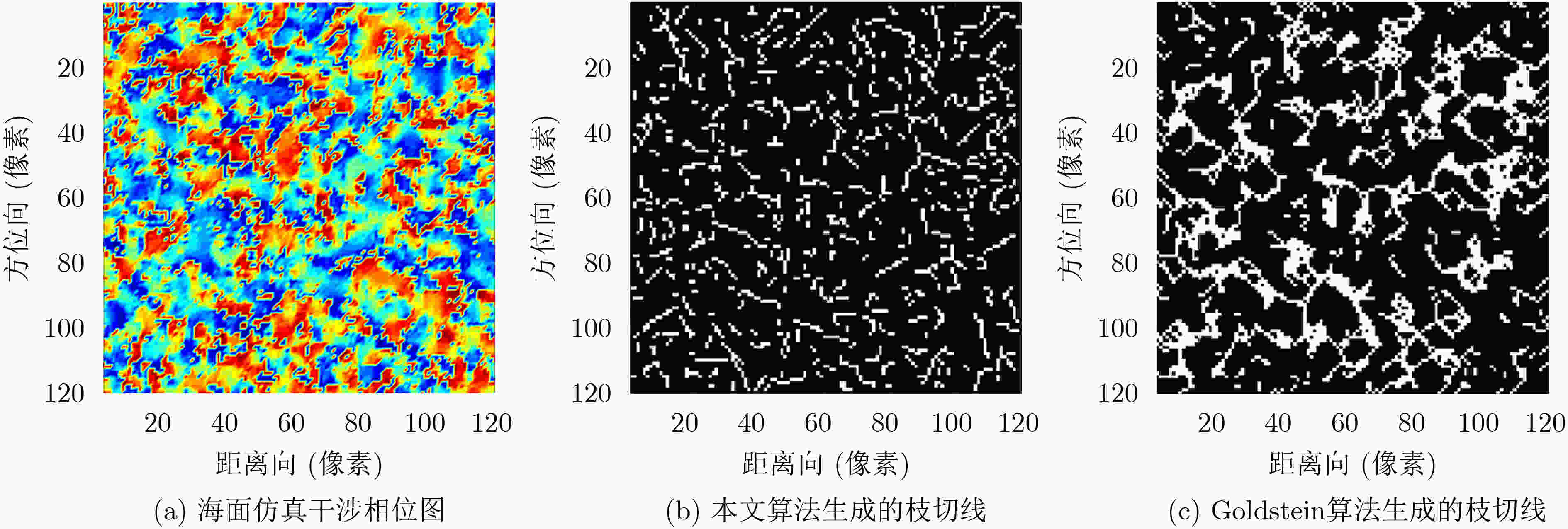
 下载:
下载:
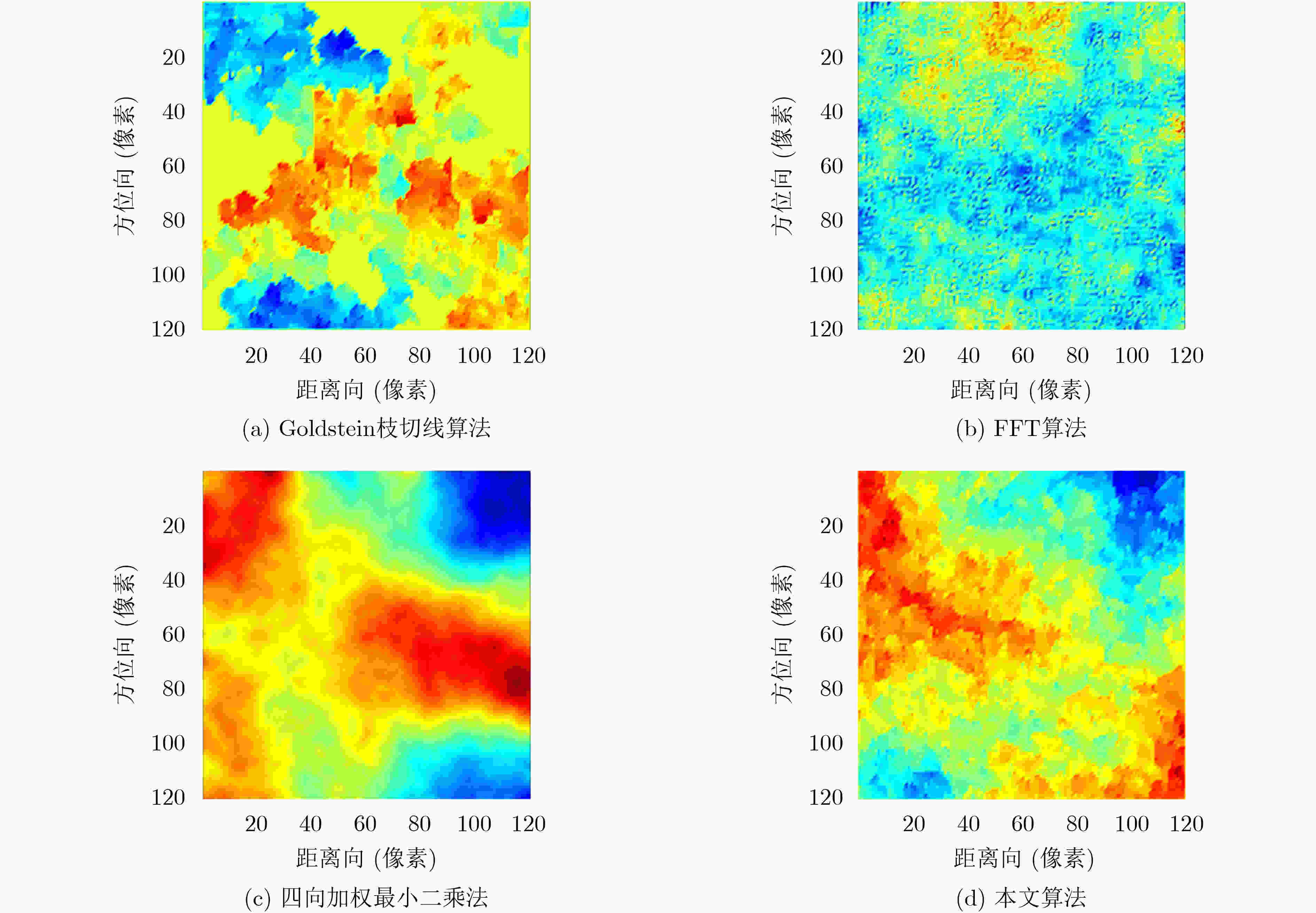

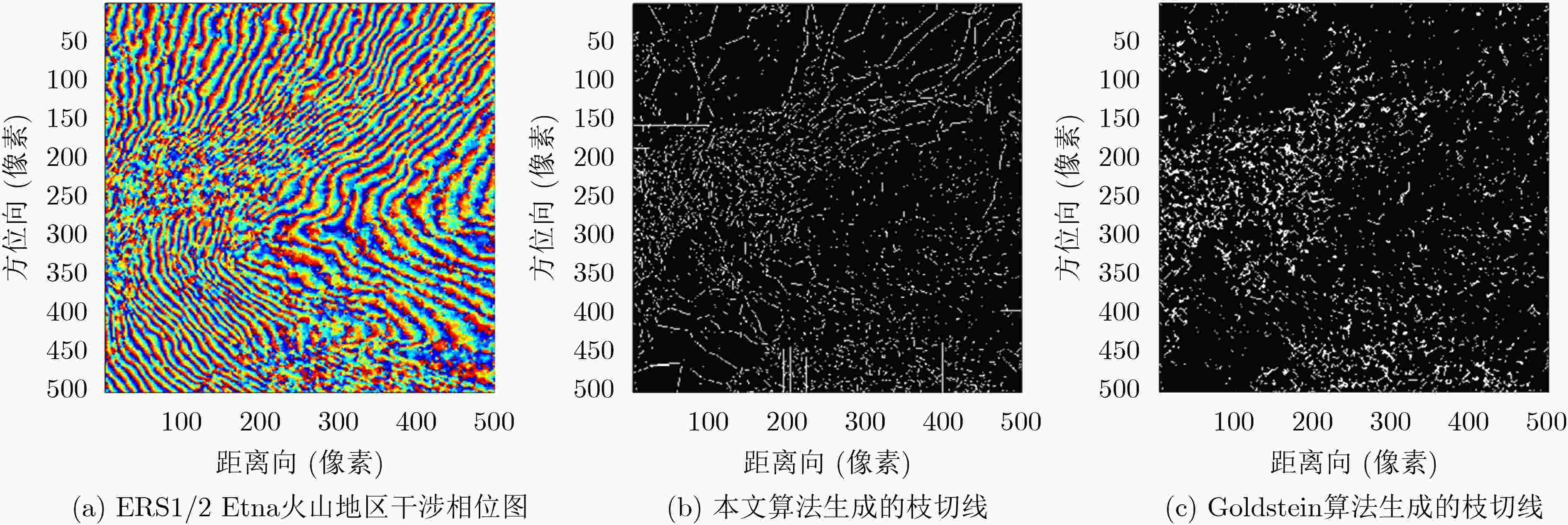
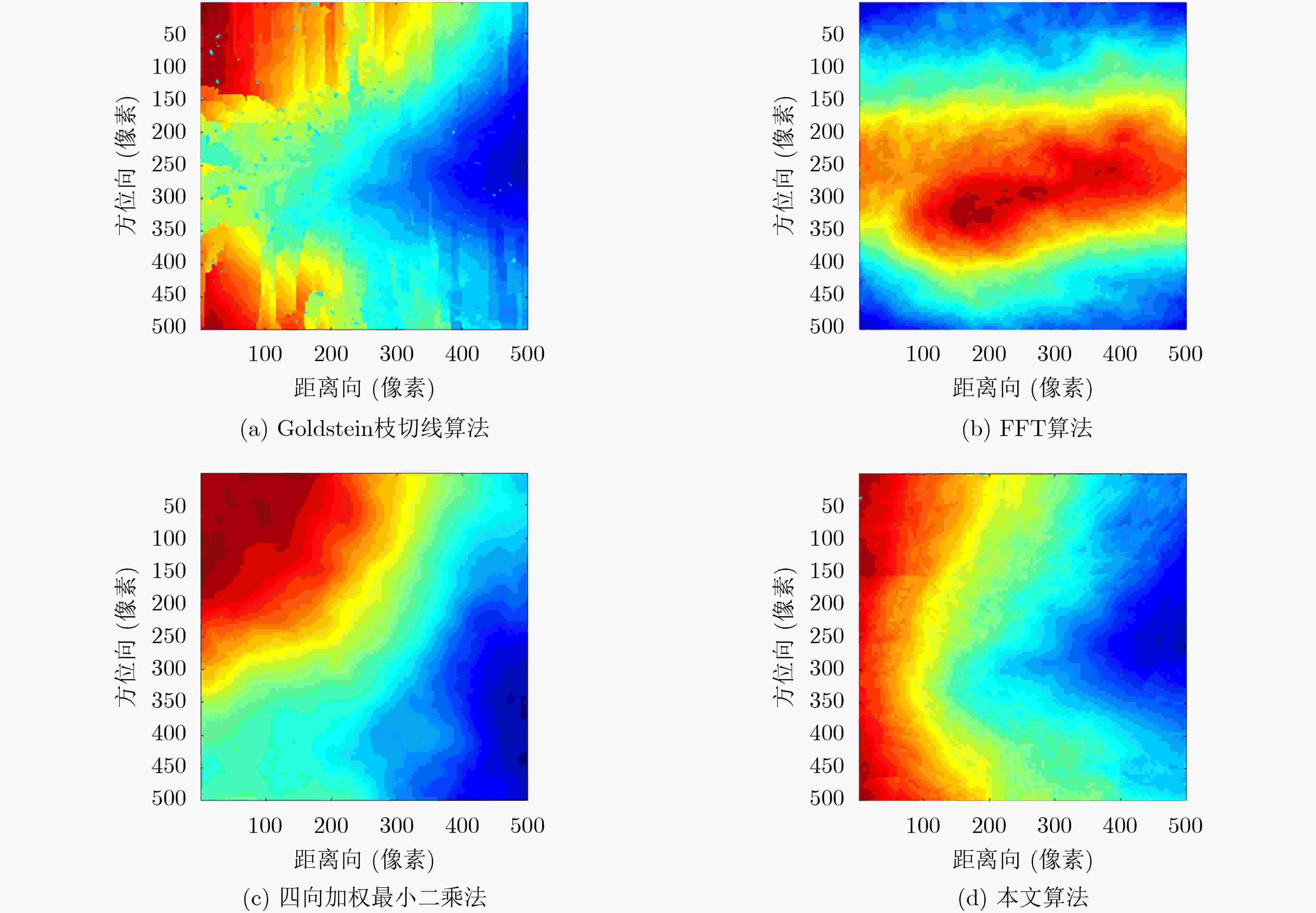
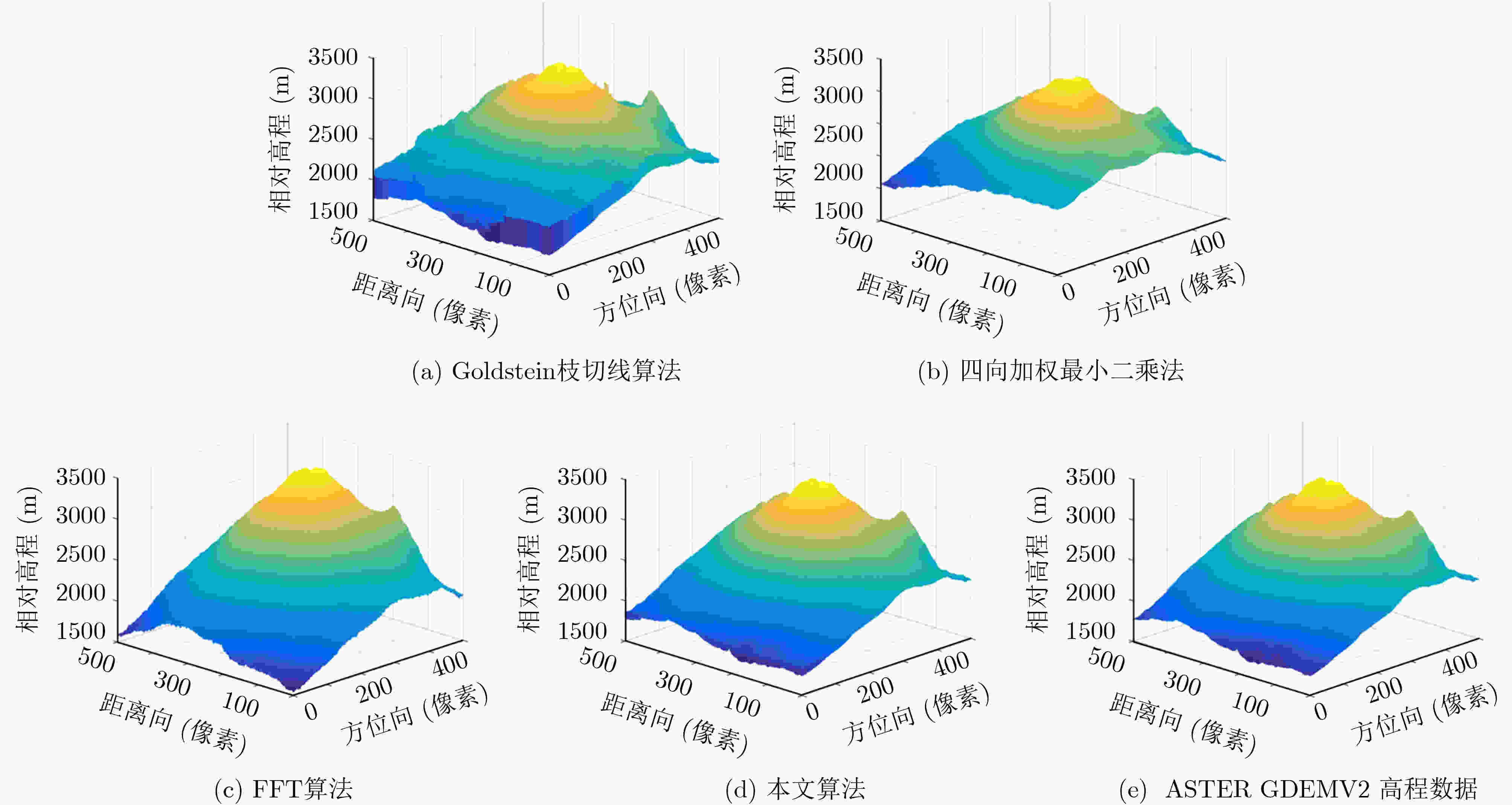


 下载:
下载:
